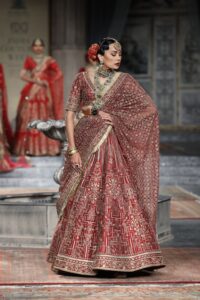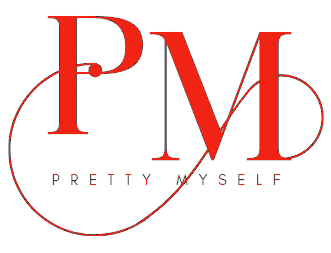Page Contents
Designing Your Future: A Step-by-Step Guide on How to Become a Fashion Designer
To Become a fashion designer in India is an exhilarating journey that demands a combination of artistic flair, technical expertise, and a deep understanding of the ever-evolving fashion industry. After completing your school education, the path to a successful career in fashion design requires a series of strategic steps. In this comprehensive guide, we will explore how you can transform your passion for fashion into a thriving profession.

Build a Solid Educational Foundation: The first step towards becoming a fashion designer is to pursue a formal education in the field. Enroll in a reputable fashion design program offered by renowned institutions like the National Institute of Fashion Technology (NIFT), National Institute of Design (NID), Pearl Academy, or other well-established fashion schools across India. These institutions offer a diverse range of degree and diploma courses, each designed to impart essential knowledge and skills.
Example: Consider enrolling in a Bachelor of Fashion Design program at NIFT. This comprehensive four-year course provides a strong theoretical and practical foundation in various aspects of fashion design, including textiles, garment construction, and fashion illustration.
Cultivate Your Creativity: Fashion design is an art form, so nurturing your creative abilities is paramount. Dedicate time to sketching, drawing, and creating fashion illustrations. Experiment with various styles, colors, and fabric combinations to develop your unique design aesthetic. Continuous practice hones your creative skills and allows you to express your vision effectively.
Example: Take inspiration from renowned designers like Sabyasachi Mukherjee, Manish Malhotra, or Ritu Kumar, and analyze their work to understand how they infuse creativity into their designs. Use this inspiration to create your own innovative designs.
Master Fabric Knowledge: Understanding fabrics and textiles is fundamental to fashion design. Learn about different types of fabrics, their characteristics, and how they interact with one another. Gain knowledge about fabric sourcing, dyeing techniques, and textile manipulation, as this will help you make informed decisions when designing your garments.
Example: Study the works of designers like Tarun Tahiliani, known for his intricate use of textiles and embroidery. Analyze how he combines various fabrics to create visually stunning and luxurious pieces.
Acquire Technical Skills: Fashion designing involves a significant technical component. Develop your skills in pattern making, garment construction, and sewing. Invest in a quality sewing machine and practice constructing garments from scratch. Consider taking sewing classes or workshops to enhance your technical proficiency.
Example: Join a local sewing class or online course to learn the intricacies of garment construction. Create a portfolio of garments you’ve sewn to showcase your technical prowess.
Stay Updated with Industry Trends: The fashion industry is dynamic, with trends evolving rapidly. Stay current by following fashion magazines, blogs, and the social media profiles of both established and emerging designers. Attend fashion shows, both local and international, to gain insights into the latest styles and trends.
Example: Follow Indian fashion weeks, such as Lakmé Fashion Week and India Fashion Week, to observe the latest collections by Indian designers. Analyze the use of colors, silhouettes, and fabrics to stay in tune with current trends.

Build a Stellar Portfolio: As you progress in your fashion designing program, begin assembling a portfolio showcasing your best work. Include sketches, illustrations, photographs of garments you’ve designed, and any projects you’ve undertaken during your studies. A compelling portfolio is essential when applying for internships or job opportunities in the fashion industry.
Example: Your portfolio should reflect your growth as a designer. Include before-and-after shots of your designs, demonstrating your progress and evolution as a designer.
Seek Internships and Work Experience: Practical experience is invaluable. Look for internships or part-time positions with fashion designers, boutiques, or fashion houses. Working in a real-world setting exposes you to the industry’s dynamics, helps you apply your knowledge, and allows you to build a network of contacts.
Example: Apply for an internship with a local fashion designer or a well-known fashion label. Assist in various aspects of the design process, from fabric selection to fittings, to gain hands-on experience.
Network and Establish Industry Connections: Building a robust network in the fashion industry is crucial. Attend fashion events, workshops, and trade shows to meet professionals in the field. Join fashion-related associations or online communities to connect with like-minded individuals and potential collaborators.
Example: Attend fashion seminars and workshops hosted by organizations like the Fashion Design Council of India (FDCI) or local fashion associations. Engage in discussions and connect with industry insiders to gain insights and mentorship opportunities.
Launch Your Own Brand or Work for Established Designers: After completing your education and accumulating experience, you have the choice to either launch your own fashion brand or work for established designers or fashion houses. If you opt for entrepreneurship, focus on branding, marketing, and business aspects alongside your designing. If you prefer to work for others, research and apply for positions with renowned designers that align with your style and aspirations.
Example: Consider starting your own fashion label specializing in sustainable fashion, a growing trend in India. Design eco-friendly collections and use social media to promote your brand’s environmental consciousness.
Frequently Asked Questions (FAQ) about How to become a Fashion Designer

What is the first step to becoming a fashion designer?
The first step to becoming a fashion designer is to build a strong educational foundation in the field by enrolling in a reputable fashion design program.
Do I need a formal degree to become a fashion designer?
While a formal degree is not mandatory, it is highly recommended as it provides essential knowledge and skills for a successful career in fashion design.
How can I develop my creativity as a fashion designer?
You can enhance your creativity by dedicating time to sketching, drawing, and experimenting with various styles, colors, and fabric combinations to develop your unique design aesthetic.
What are the key technical skills I need to acquire as a fashion designer?
Technical skills like pattern making, garment construction, sewing, and fabric knowledge are crucial for a fashion designer.
How can I stay up-to-date with the latest fashion industry trends?
You can stay current with industry trends by following fashion magazines, blogs, attending fashion shows, and monitoring the work of both established and emerging designers.
Is it necessary to have a fashion design portfolio, and what should it include?
Yes, a fashion design portfolio is essential and should include sketches, illustrations, photographs of your designs, and any projects you’ve worked on during your studies.
What are the benefits of seeking internships in the fashion industry?
Internships provide valuable hands-on experience, exposure to industry dynamics, and an opportunity to build a network of contacts in the fashion industry.
How can I establish industry connections and network with professionals in the field?
You can establish industry connections by attending fashion events, workshops, trade shows, and joining fashion-related associations or online communities.
What are the career options available to fashion designers after completing their education and gaining experience?
Career options include starting your own fashion brand, working for established designers or fashion houses, or specializing in areas like sustainable fashion or costume design.
What is the most important advice for someone aspiring to become a fashion designer in India?
The most important advice is to combine your education with creativity, technical skills, industry knowledge, and networking to embark on a fulfilling and successful career in the dynamic field of Indian fashion.
In conclusion, To become a fashion designer in India after school involves a systematic approach that combines education, creativity, technical skills, industry knowledge, and networking. By following these steps and remaining dedicated to your passion for fashion, you can embark on a fulfilling and successful career in this dynamic field, leaving a lasting impression on the world of Indian fashion.



